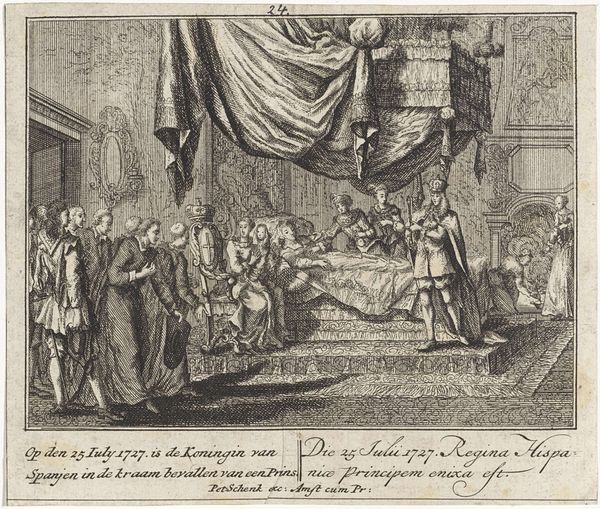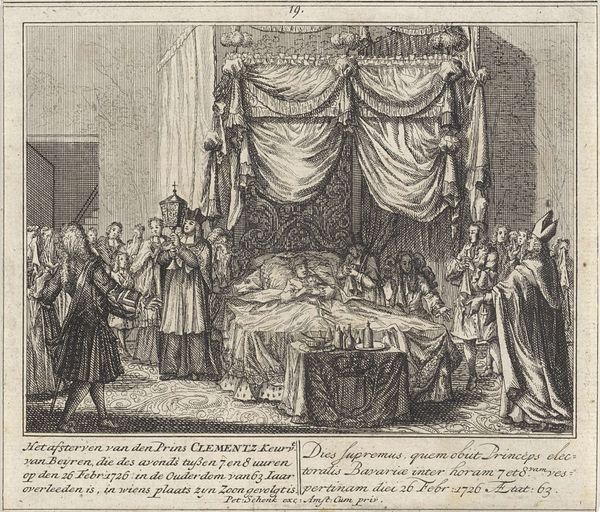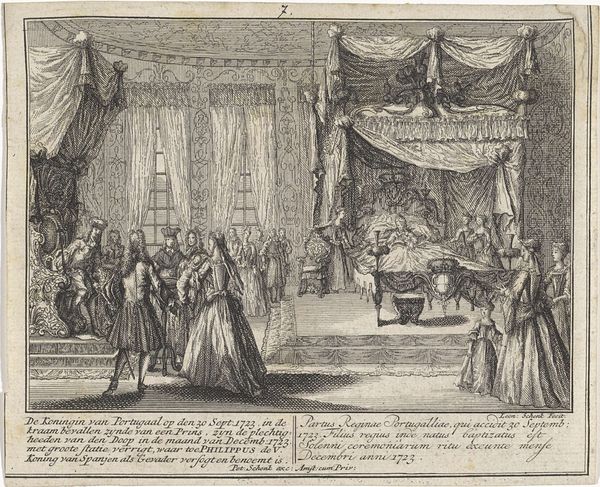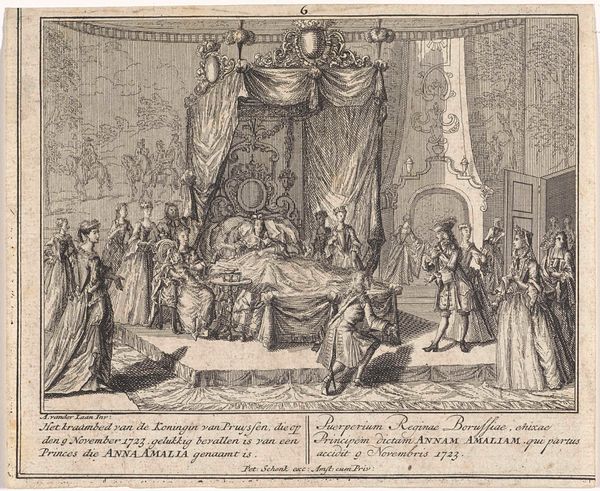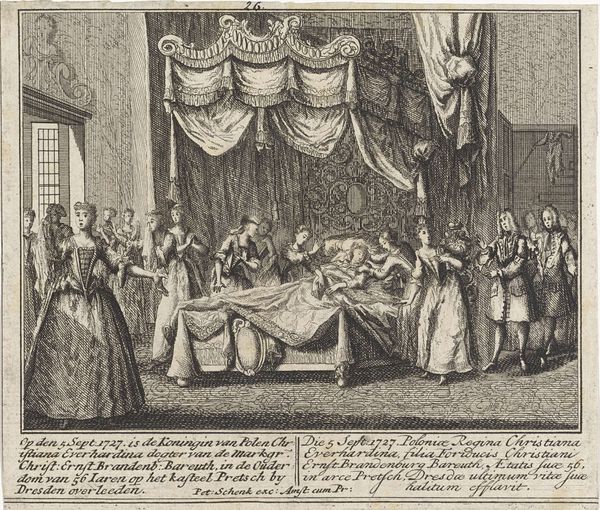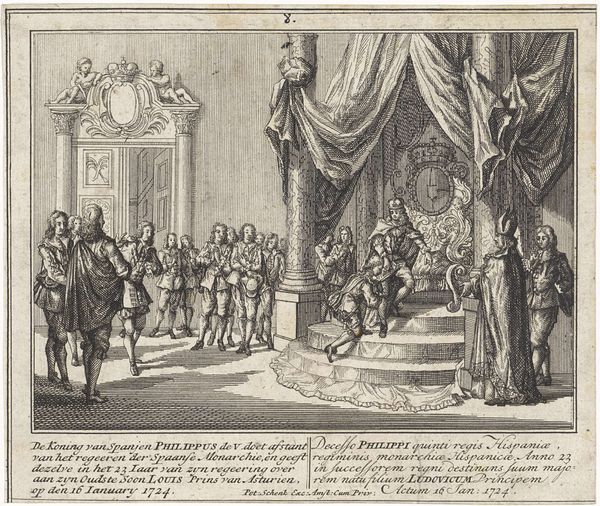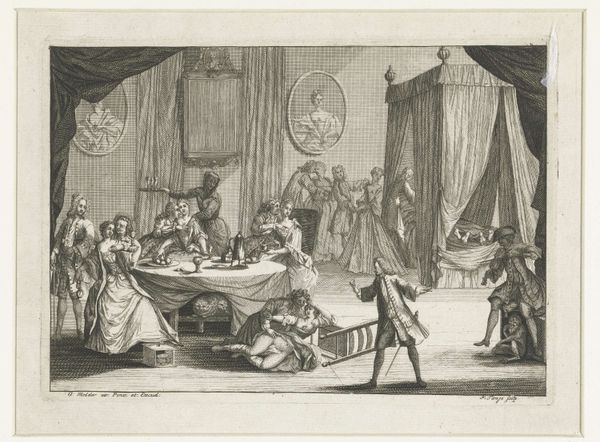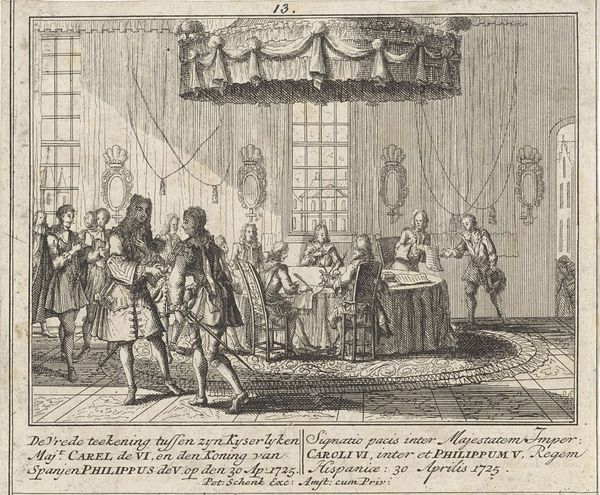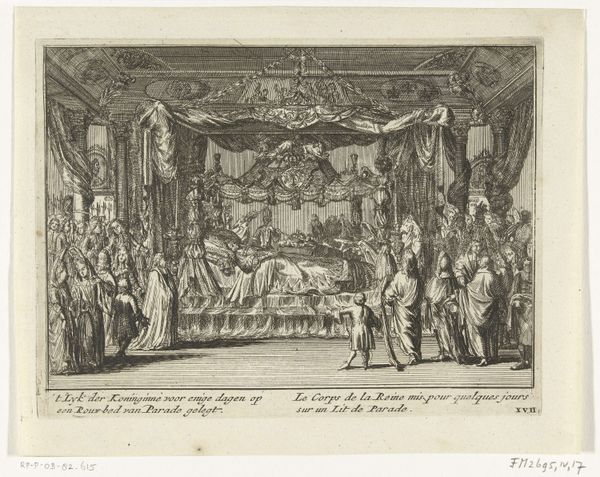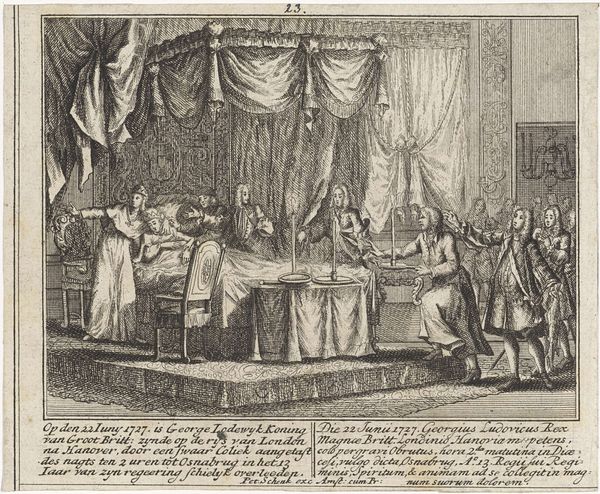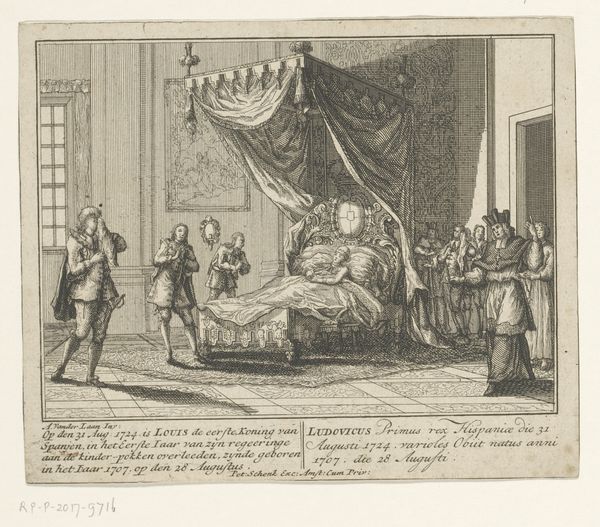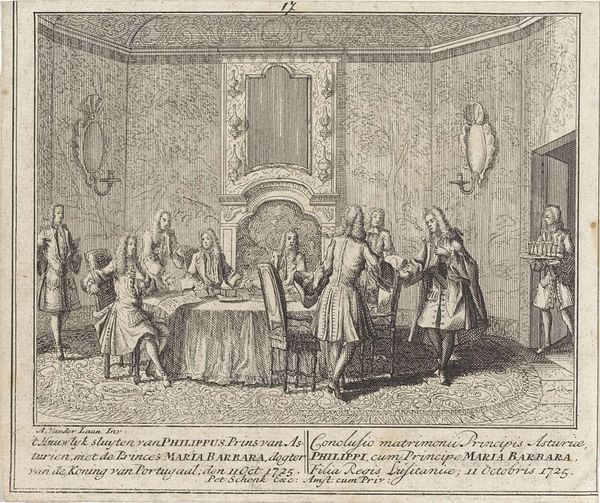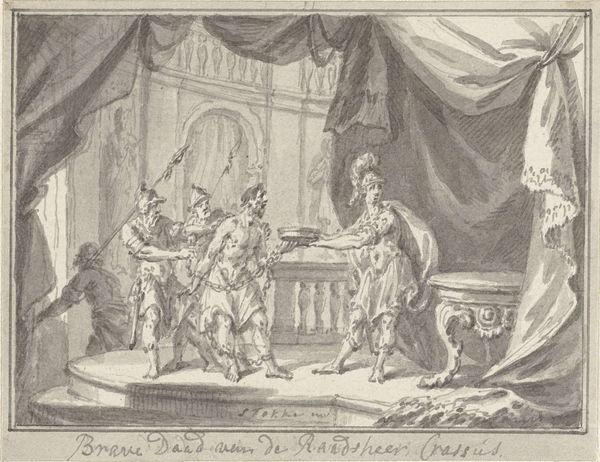
engraving
#
portrait
#
narrative-art
#
baroque
#
history-painting
#
engraving
Dimensions: height 159 mm, width 186 mm
Copyright: Rijks Museum: Open Domain
Curator: This engraving, "Death of Francesco Farnese," crafted in 1727 by Leonard Schenk, captures a pivotal moment in history. It's currently held in the collection of the Rijksmuseum. Editor: My initial impression is one of quiet chaos, a stark portrayal of grief and perhaps political maneuvering. The density of figures crammed into this confined space under the canopy—it's claustrophobic yet grand. Curator: The artist's selection of Baroque stylistic elements emphasizes the gravity of the scene and underscores the symbolic richness inherent to depictions of royal life. Think of the iconography of power – the heavy curtains, the figures poised in gestures of grief and anxiety, and the prone body, itself a symbol. Editor: Right, the Baroque love of theatricality and drama works well here. But also I see power dynamics intensely scrutinized: who's close to the dying leader? Whose reactions appear performative rather than genuine? Who's next in line and who stands to benefit from this event. It's all there in how each person is represented. Curator: Notice how Schenk employs line and texture to communicate more than just surface details. The contrasting use of light and shadow and the texture created through hatching and crosshatching draw your eyes to certain figures while obscuring others in the depth. Every deliberate choice guides our reading of events. Editor: It’s also revealing to think about what historical narratives get immortalized in this way and who gets to write them. What was Farnese's rule like? Who benefitted from his policies and who suffered? This image prompts us to ask deeper questions. What about women at court? And what of people outside its bounds, struggling with class division? This is their story too. Curator: Certainly. Considering that many artistic interpretations become a part of a society's collective understanding and shared remembrance, we have to ask ourselves, “What meanings can be gleaned through this visual echo through time?" What stays present through imagery and culture? Editor: Ultimately, I think this piece isn't simply about a single man’s passing but a window onto systems of power, the constructed narratives of succession and leadership, and the human element in times of crisis – a lens into social history we all are inheritors of.
Comments
No comments
Be the first to comment and join the conversation on the ultimate creative platform.
